2024 Hyundai Sonata Review: New styling and features keep it compelling

Pros: Bold styling; efficient hybrid; powerful N Line model; available all-wheel-drive; lots of space; affordable base price
Cons: N Line isn’t quite as sporty as you might expect; base engine isn’t especially inspiring
The family sedans in this world are dwindling, but fortunately, the ones that remain are quite good, including the 2024 Hyundai Sonata. Not only that, it’s quite affordable at the low end. It’s one of the only four midsize sedans that you can get for less than $30,000.
Even better, the Sonata is quite striking to look at, particularly with the new 2024 refresh that gives it a particularly low and futuristic shape. It’s quite spacious inside and boasts excellent, user-friendly technology. It’s also rather efficient, especially the well-executed hybrid powertrain. Or, if power is your thing, there’s a gutsy turbocharged 2.0-liter four-cylinder with nearly 300 horsepower in the N Line.
Competition such as the revised 2025 Toyota Camry and Honda Accord may feel a tad more refined on the road, and offer slightly more playful driving dynamics, but they also offer less variety in trim and powertrain options, and they have more conservative styling (though that could be a positive depending on your viewpoint). Regardless, the Sonata is a family car that should be on your short list (of an already small segment) if you’re looking at sedans.
Interior & Technology | Passenger & Cargo Space | Performance & Fuel Economy
What it’s like to drive | Pricing & Features | Crash Ratings & Safety Features
What’s new for 2024?
The Sonata received a fairly significant refresh for 2024. It has thoroughly redesigned front and rear ends, the former of which has a full-width daytime running light bar to go with its lower-looking nose. The interior has been revamped, too, with a design based on the Ioniq models and now contains a pair of larger 12.3-inch screens for instruments and infotainment. And finally, the Sonata comes with wireless Apple CarPlay and Android Auto.
Hyundai also tweaked the powertrain lineup. All-wheel drive is now available, much as it is in the Sonata’s mechanically related Kia K5 cousin. What’s no longer available is the turbocharged 1.6-liter four-cylinder. That leaves just the standard naturally aspirated 2.5-liter four-cylinder, naturally aspirated hybrid 2.0-liter four-cylinder, and the N Line’s turbocharged 2.0-liter four-cylinder.
What are the Sonata interior and in-car technology like?
The 2024 Hyundai Sonata’s new interior borrows heavily from the Ioniq line. Gone is the curvy dash with equally curvy intersecting segments. In place of that is a squared-off dash with a big monolith containing a combination of either two 12.3-inch screens for both instruments and infotainment (the infotainment screen being touch sensitive) or, on the base model, the same infotainment touchscreen, but with simpler digital instruments flanking a 4.2-inch information screen. In front of the panel is an Ioniq-style steering wheel with three spokes and a circular center portion with four square dots, reflecting the sequence for “H” in morse code. The shifter also goes to the Ioniq-style column stalk, and the infotainment and climate controls have been changed. The infotainment shortcut buttons are now physical and sit just above the climate buttons, and said climate buttons are now touch sensitive. But at least the temperature knobs remain. The infotainment remains as user-friendly as ever, thanks to mild updates to graphics to keep it looking fresh, as well as ensuring it runs very smoothly and quickly. A 12-inch color head-up display is available, too, but only on the Limited Hybrid trim.
There are some nice touches for tech junkies, too, including Hyundai’s “Digital Key 2,” which allows the owner to unlock the Sonata by waving an authorized smartphone over the exterior door handles. Hyundai also offers wireless Android Auto and Apple CarPlay integration as standard equipment. There are three USB ports, and wireless charging is refreshingly not exclusive to the highest trim level.
N Line buyers are treated to more aggressively bolstered seats, a sport steering wheel and unique red accents in the stitching and on the air vents.
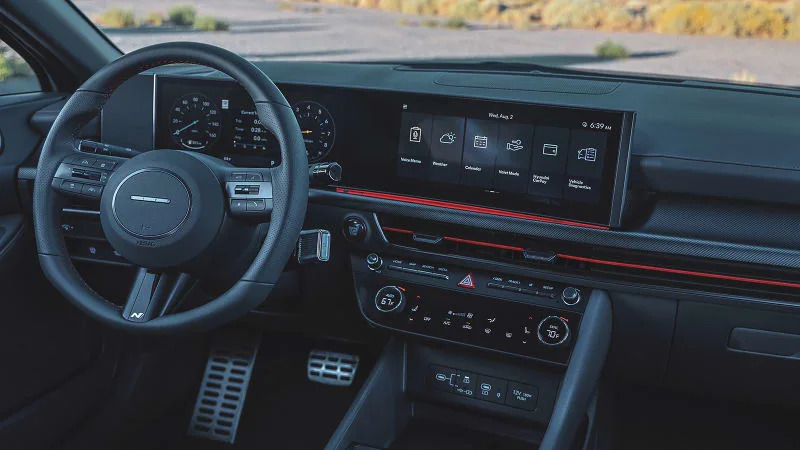
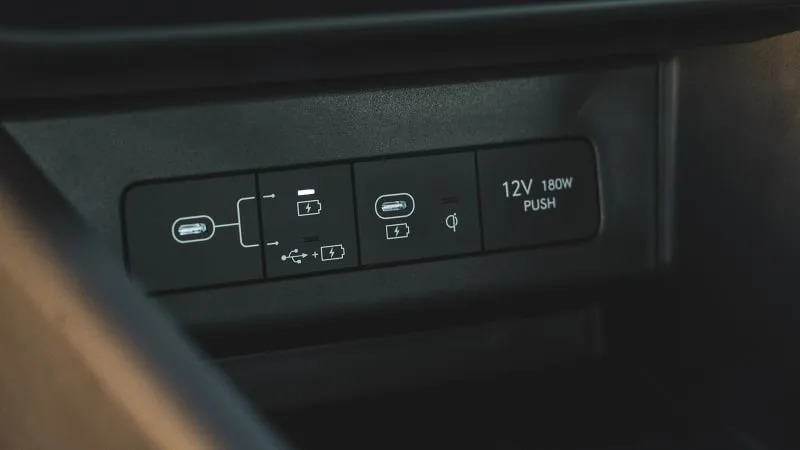
How big is the Sonata?
The Sonata doesn’t have as much backseat legroom as the palatial Honda Accord. The gap isn’t as massive as the spec sheet suggests (we think there are differences in the way Hyundai measures interiors), and people taller than 6 feet can still sit one behind the other. You should also be able to fit a rear-facing child seat in the back without moving a front seat forward. Headroom is plentiful despite that sleek roofline, even more than the Accord and Camry, both on the spec sheet and in person.
The trunk offers 15.6 cubic feet, which is fairly middle of the road for the segment. But as we discovered in our Sonata luggage test, that figure translates into similarly impressive stuff-carrying ability. Indeed, only the Accord trunk has been able to hold more stuff in our midsize sedan luggage tests.
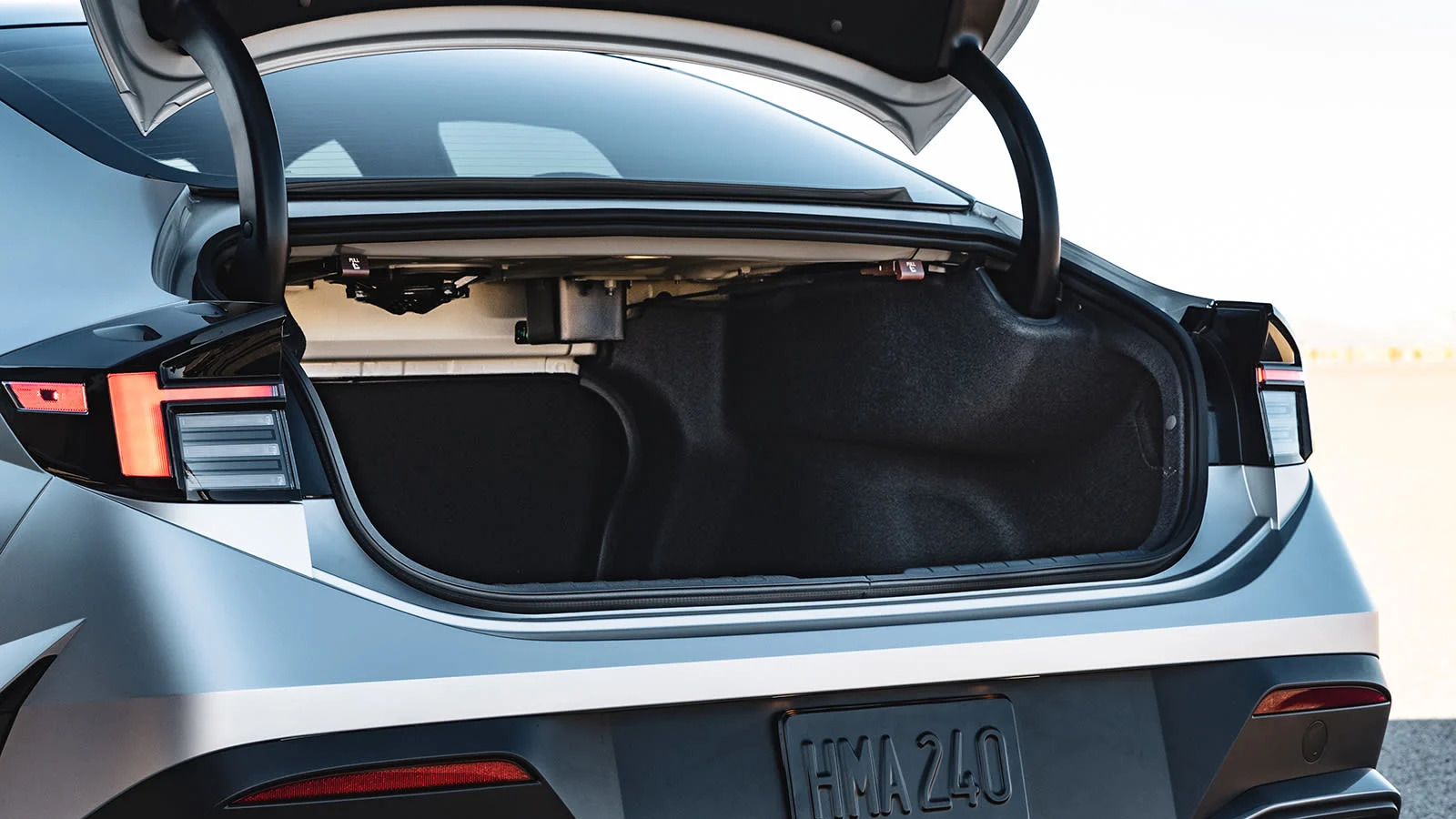
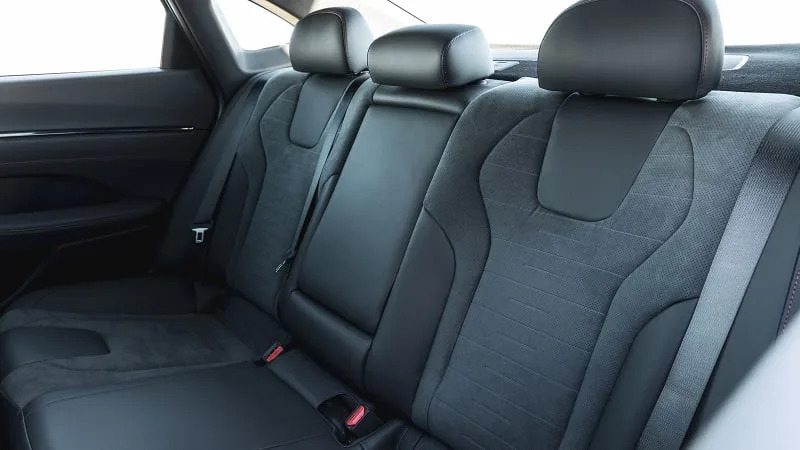
What are the Sonata fuel economy and performance specs?
The 2024 Sonata is available with a choice of three powertrains. The base engine, only offered on the SEL trim, is a 2.5-liter, naturally aspirated four-cylinder making 191 horsepower and 181 pound-feet of torque. These figures are typical for entry-level engines in the midsize segment. This engine is rated at 25 mpg city, 36 mpg highway and 29 mpg combined with front-wheel drive, and 25/34/28 with all-wheel drive.
The most potent engine offering is the 2.5-liter turbocharged four-cylinder under the hood of the Sonata N Line. It spins out 290 hp and 311 lb-ft of torque. Unlike the other Sonatas, the N Line uses a dual-wet-clutch automated manual that also provides rev-matching and launch control. The N Line’s turbo-four can’t quite match the horsepower of the Toyota Camry’s V6, though it does offer more torque. EPA estimates for the N Line are 23/32/27.
The fuel-economy champ is a 2024 Hyundai Sonata Hybrid. It utilizes a 150-horsepower, 2.0-liter naturally aspirated inline-four and a 39-kW electric motor paired with a traditional six-speed automatic. Combined, the powertrain produces a total of 192 hp. This is good for 44 mpg city, 51 mpg highway and 47 mpg combined in the SEL and Limited.
What’s the Sonata like to drive?
We’ve driven the Sonata in hybrid and N Line variants, but we have yet to try out one with the base 2.5-liter with or without all-wheel drive. Of the versions we’ve driven, we’ve found them to be surprisingly engaging to drive compared to Sonatas of that past. That even applies to the hybrid, which was previously synonymous with dull. Although the Honda Accord is the superior athlete in this class (RIP Mazda6), the Sonata isn’t far behind, striking a competent balance between comfort and handling prowess for a daily driver. You probably won’t have fun in it, but it’s vice free and it won’t bore you to death with completely anesthetized controls. Take the steering, which has linear, consistent effort and is sufficiently responsive to your inputs. We’re also fans of Hyundai’s new, nicely contoured four-spoke steering wheel.
The Sonata Hybrid drives more like a regular gas-only car than its rivals thanks to its traditional transmission. The Accord Hybrid feels more like an electric car (with an engine that occasionally whirs independently of what your right foot is doing), while the Toyota Camry can drone due to its e-CVT (although it is a bit better for 2025 in this regard). If you’re put off by the typical weirdness of a hybrid, this is the one to get. At the same time, you can definitely notice the electric boost given to the engine when accelerating.
The N Line, however, is much quicker. Acceleration is strong enough to cause the steering wheel to squirm in your hands, particularly at lower speeds. With stiffer suspension components and bigger brakes, there’s more to the N Line than just extra power. The car is more responsive in corners but the ride doesn’t beat up occupants over bad pavement. The faux suede seats provide loads of grip to help keep you in place. The dual-clutch transmission, though, isn’t spectacular. It’s a little clunky on shifts at low speed and when leaving a stop. It’s not particularly quick at shifting, either, and even in Sport mode, the shift logic works hard to keep the revs low. For really sporty driving, you’ll definitely be working the shift paddles. But, hey, it’s an N Line, not a full-on N model.
What other Hyundai Sonata reviews can I read?
2021 Hyundai Sonata N Line First Drive Review
Our review of the new-for-2021 Sonata N Line, which boasts more horsepower than any other family sedan. We wouldn’t call it a full-on sport model, however, as it’s smartly not hardcore enough to put off those who just want extra thrust and sharpened responses without a punishing ride or hyperactive nature. Our impressions remain largely consistent with the updated 2024 model.
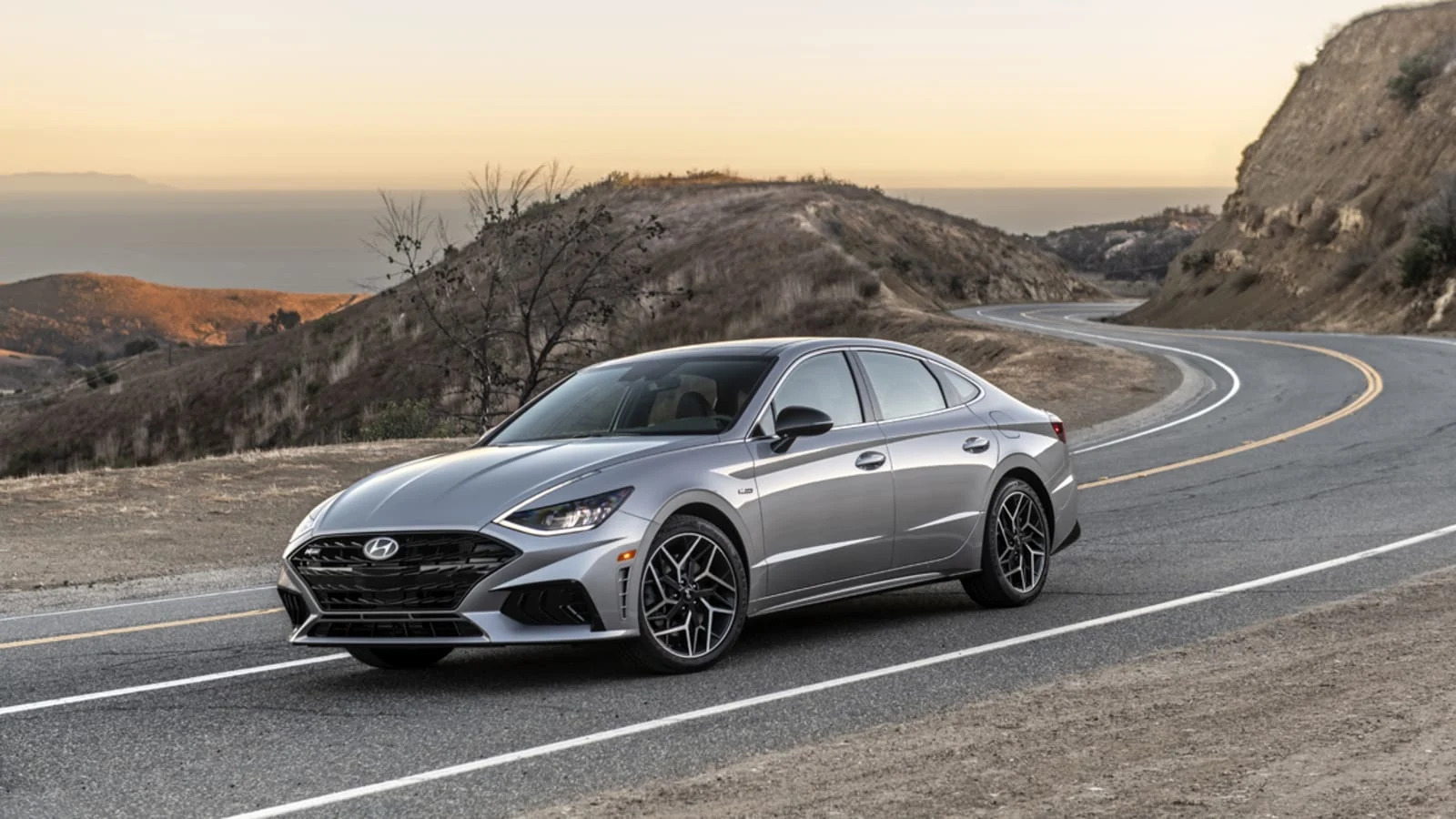
2020 Hyundai Sonata Luggage Test | How much fits in the trunk?
The official trunk volume is 16.3 cubic-feet. Great, but how much does that mean in terms of actual stuff? This answers that. The results should not change despite the updates for 2024.
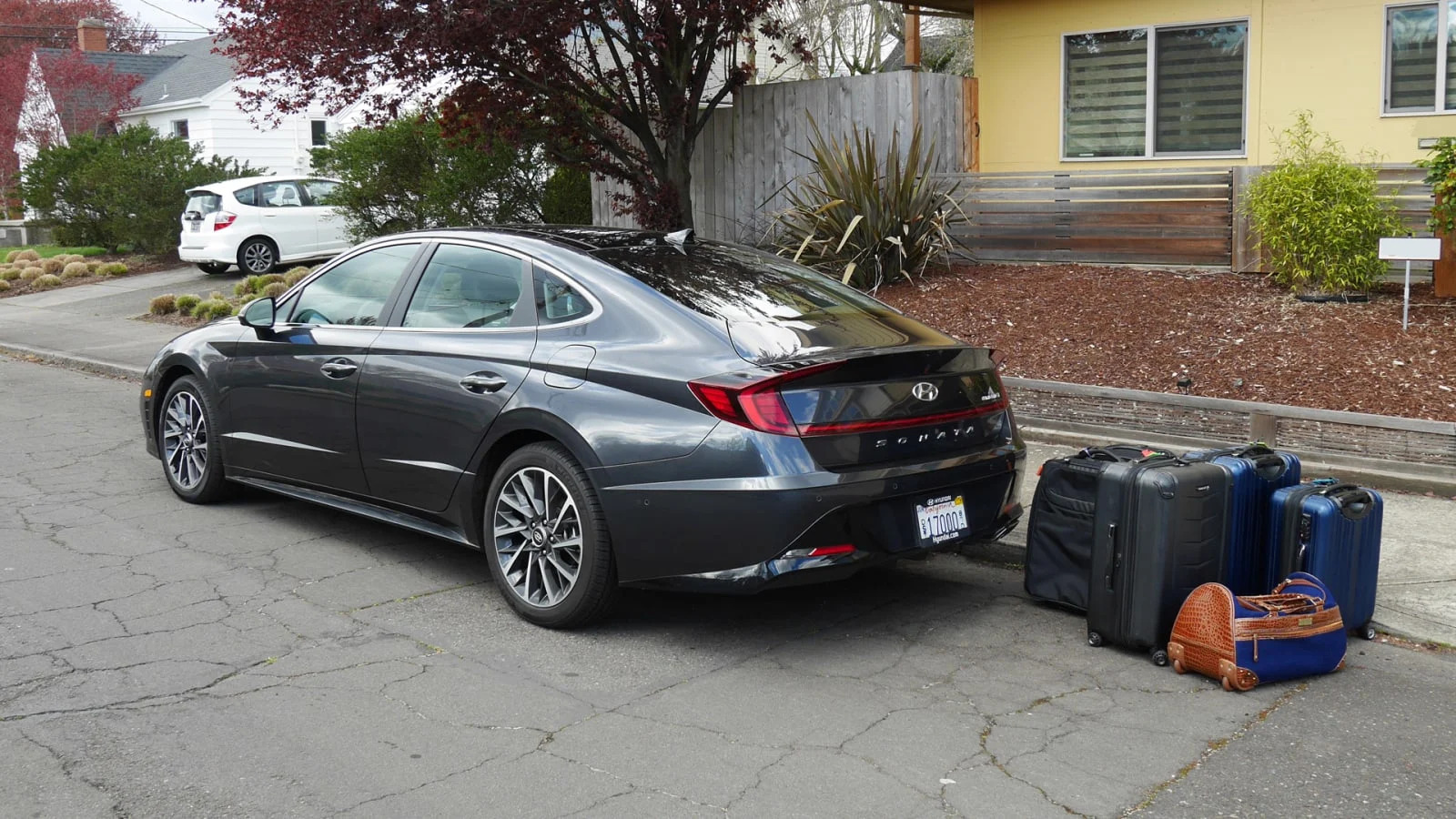
How much is the 2022 Sonata price, and what features are available?
The Sonata SEL is robustly equipped for a base-model vehicle. It has LED head- and taillights, 17-inch alloy wheels, powered and heated side mirrors, heated front seats, dual-zone climate control, wireless Apple CarPlay and Android Auto, adaptive cruise control and automatic high-beam headlights. The SEL has a Convenience Package available for $3,050 that adds a bevy of features including larger 18-inch alloy wheels, panoramic sunroof, leather-wrapped steering wheel, 12.3-inch instrument screen, navigation, wireless device charging, auto-dimming rearview mirror and Hyundai Digital Key 2, which lets you use your phone as a key.
The most distinctive offering is the N Line, which in addition to its unique engine gets sportier front and rear bumpers, a rear spoiler and diffuser, dual exhaust tips, black exterior trim, N Line badging, dark interior trim with red accents, aluminum pedals, ambient lighting and sportier seats with grippy faux suede upholstery. Hyundai also includes various other comfort and convenience features such as a panoramic sunroof, heated front seats, automatic climate control, eight-way power adjustable driver seat, wireless phone charging, 12.3-inch instrument screen, Bose sound system, Hyundai Digital Key 2 and remote start.
All prices below include a reasonable $1,150 destination charge.
SEL: $28,650
SEL Hybrid: $31,950
N Line: $36,100
Limited Hybrid: $38,350
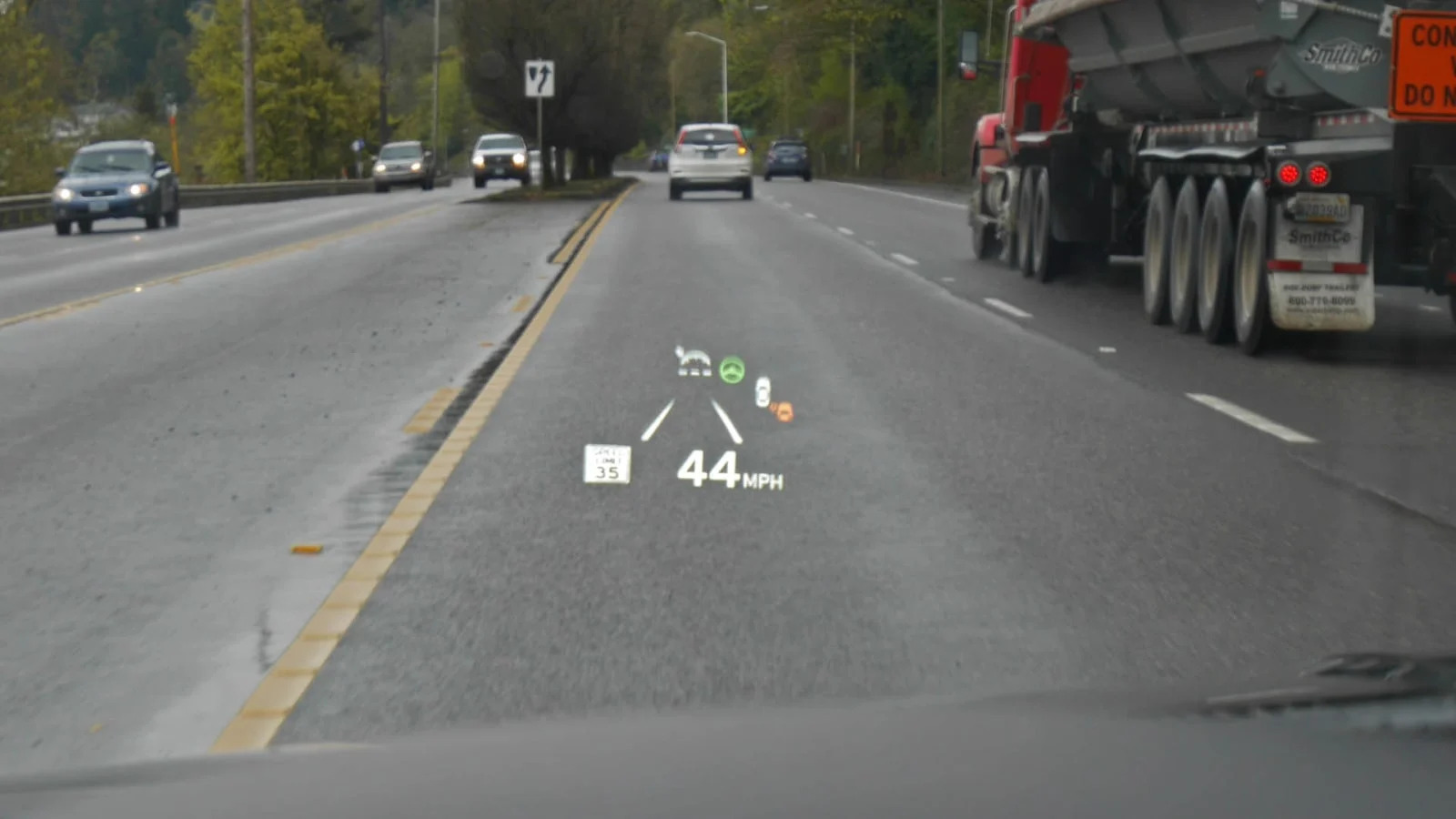
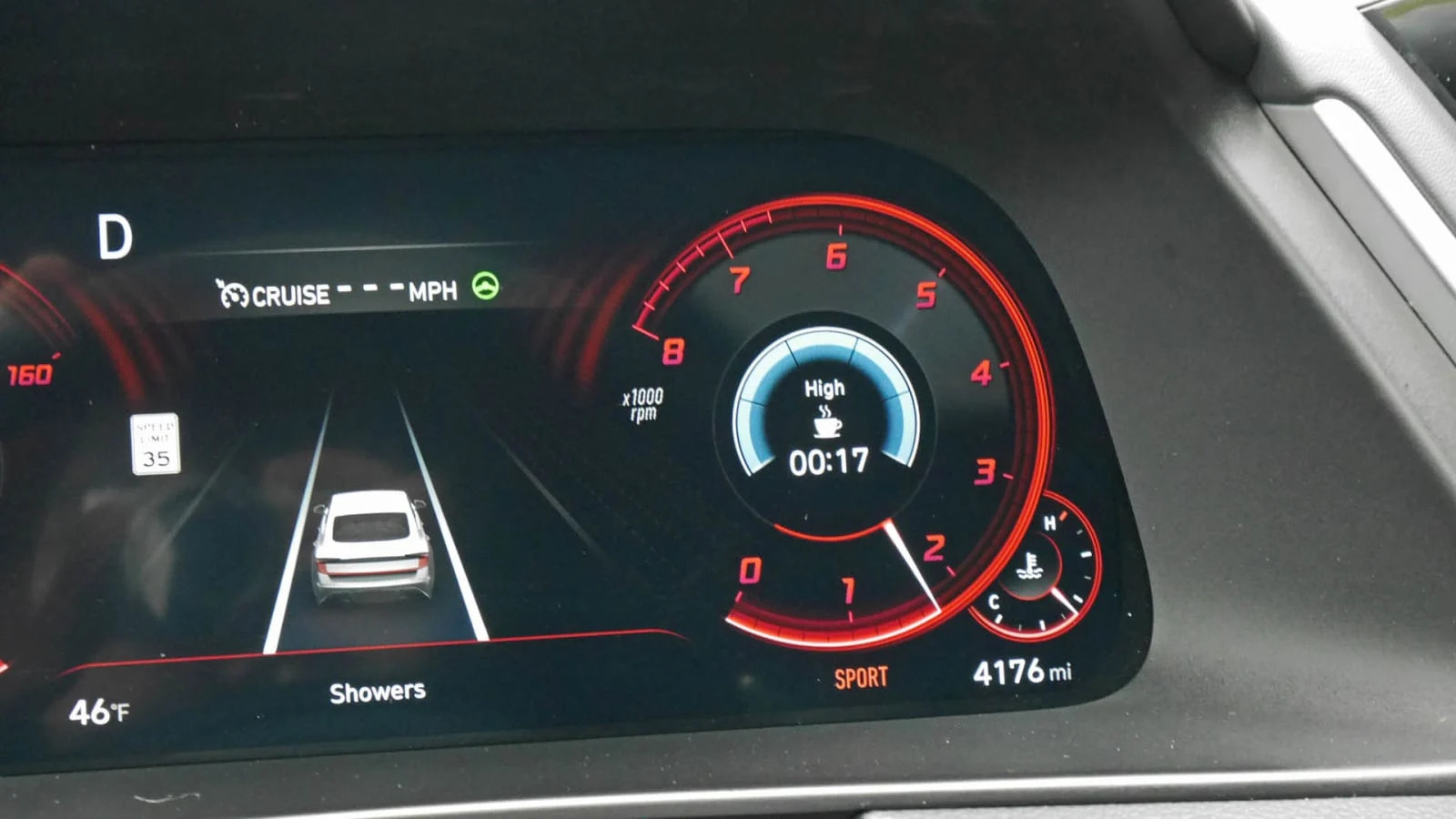
What are the Sonata safety ratings and driver assistance features?
Standard safety equipment on the 2024 Sonata includes forward collision warning with pedestrian and cyclist detection, automatic emergency braking, blind-spot warning a driver inattention warning system, lane keeping assist with lane centering, a rear occupant alert system, automatic high beams and adaptive cruise control. The Limited Hybrid is the only trim that gets the complete, multi-faceted array of blind-spot tech that we named Autoblog Technology of the Year several years ago.
Besides the sheer volume of these safety and driver assistance features, we’ve found them to be among the best-executed on the segment. They do their job well without annoying you. The Sonata gets a an IIHS Top Safety Pick rating for all trims. Its headlights have improved across the board, though strong performance is required in the organization’s updated moderate front overlap test. The Sonata has a “Good” rating for the old test, but a “Poor” rating for the new one, preventing it from getting the Top Safety Pick+ rating. All other scores are exceptional. The government (NHTSA) hasn’t given the sedan an overall safety rating, but frontal testing is rated at four out of five stars, and rollover safety at five stars.
Related video:







